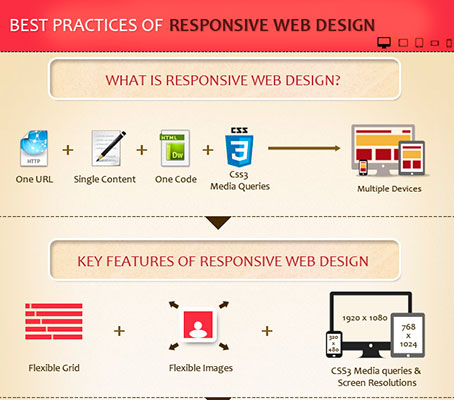Essential Facets Of Website Design: Standards For Developing A User-Centric Website
Essential Facets Of Website Design: Standards For Developing A User-Centric Website
Blog Article
Web Content Create By-Abildtrup Skinner
When it comes to web site design, making sure user-friendliness is key. From responsive design to structured navigating, every aspect plays a crucial function in creating a website that accommodates your audience's needs. Yet what concerning the better details that can make or break an individual's surfing experience? Stay tuned as we discover some often-overlooked ideas that can elevate your web site's functionality to the next level, making it absolutely stick out in the digital landscape.
Value of Responsive Style
Responsive style is a crucial facet of contemporary website development. Ensuring your web site is receptive ways that it can adjust to different display sizes and tools, offering a seamless experience for customers.
With the enhancing use of mobile phones and tablet computers to access the net, having a responsive style is necessary for reaching a bigger audience. It helps in enhancing user experience by making your website simple to browse and read on any type of tool.
In addition, receptive layout can positively influence your internet search engine positions, as internet search engine like Google prioritize mobile-friendly web sites. By having a receptive style, you're additionally future-proofing your internet site, as brand-new devices with varying screen dimensions continue to emerge.
Simplify Navigating Structure
To improve individual experience and promote easy accessibility to info on your web site, enhancing the navigating structure is paramount. When making your website, focus on developing a clear and user-friendly navigation menu that assists visitors find what they're looking for swiftly.
Limitation the variety of food selection things to the essentials, grouping associated web pages together to stay clear of frustrating individuals. mouse click the next web page detailed tags that clearly indicate the content of each web page, making it simpler for users to recognize where each web link will take them.
Think about carrying out dropdown menus for subcategories to avoid cluttering the main navigation bar. In addition, include a search bar plainly on the page for users who prefer searching for certain info.
Focus on mobile responsiveness in your navigating design to ensure very easy accessibility on all gadgets.
Optimize Page Lots Speed
Improving page tons speed is important for retaining site visitors on your internet site. Slow-loading ada site compliance and can cause high bounce rates. To enhance web page load speed, beginning by enhancing photos. Press pictures without compromising quality to minimize their data dimensions.
In addition, enable web browser caching to save often accessed resources locally, speeding up tons times for returning visitors. Minify CSS, JavaScript, and HTML files by eliminating unneeded personalities, comments, and format, boosting load rate.
Take into consideration utilizing a web content distribution network (CDN) to disperse your web site's web content throughout several web servers worldwide, reducing latency for individuals accessing your website from various areas. Finally, restrict the use of third-party scripts and plugins, as they can substantially impact load times.
Conclusion
To conclude, by integrating receptive layout, simplifying navigation, and maximizing page tons rate, you can develop a straightforward website that attract a broader target market and improves individual experience. These essential elements make sure that site visitors can quickly access and browse your website across various tools, bring about enhanced interaction and satisfaction. By focusing on these crucial aspects, you can develop a successful website that keeps customers coming back for even more.
